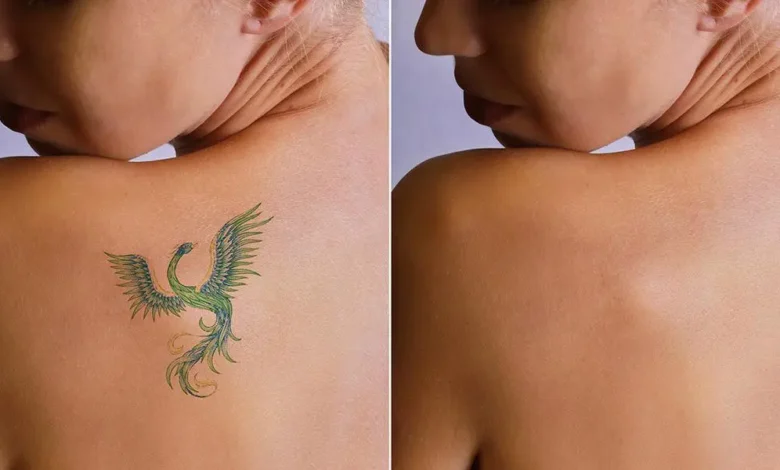Can Laser Tattoo Removal Fade All Ink Colours?

The realm of body art has historically been a landscape of permanent choices. The ink that one decides to adorn their skin with is often perceived as a lifetime commitment. However, with advances in technology, particularly in the field of laser tattoo removal, the narrative around tattoo permanency is shifting. Despite this progress, the question remains—can laser tattoo removal effectively fade all ink colours?
The Science Behind Tattoo Removal
To address this question, one must first understand the science behind the process. Laser tattoo removal employs highly concentrated light beams to break down the pigment particles in the tattoo ink. As the light penetrates the skin, it targets these particles, which are then absorbed by the body’s lymphatic system and naturally eliminated.
The Challenge with Different Ink Colours
However, not all ink colours respond equally to the laser treatment. Dark hues like black and dark blue absorb all laser wavelengths, making them easier to break down. These ink colours often respond best to the treatment, showing significant fading after several sessions. Conversely, lighter colours such as yellow, green, and certain shades of blue can be more challenging to remove. These pigments reflect a higher amount of light, requiring specialised lasers that operate at specific wavelengths to target the unique optical properties of each hue.
Factors Impacting Ink Removal Effectiveness
Beyond colour, several other factors impact the effectiveness of laser tattoo removal. The age of the tattoo, the depth of ink placement, the density and quality of the ink used, as well as an individual’s skin type and immune system, all play pivotal roles in the removal process. In general, older tattoos and those with less dense ink may fade more quickly than newer, more vibrant designs.
Advancements in Laser Technology
Thanks to advancements in laser technology, newer devices have been developed that can emit wavelengths capable of targeting a wider spectrum of ink colours. For instance, Q-switched lasers, which produce a high-intensity pulse of light, are particularly effective at shattering tattoo pigment into smaller particles. Moreover, picosecond lasers, a more recent innovation, can deliver energy in ultra-short bursts, further enhancing the process for difficult-to-remove ink colours.
Customising Treatment Plans
Professionals in tattoo removal clinics are adept at customising treatment plans to match the specifics of each tattoo. By carefully selecting the appropriate type of laser and adjusting settings like wavelength and pulse duration, practitioners can optimise the process for each unique situation.
Evaluating The Likelihood of Complete Removal
While laser tattoo removal has come a long way, predicting the complete removal of all ink colours remains complex. Each case should be evaluated on an individual basis by experienced professionals who understand the nuances of the technology and the science of skin. In some instances, certain ink colours may only fade instead of being entirely removed. Clients seeking tattoo removal must maintain realistic expectations and be aware that multiple sessions are often necessary for the best results.
The Role of Aftercare in Maximising Results
Post-treatment care is equally crucial in maximising laser tattoo removal results. Proper aftercare can reduce the risk of side effects such as scarring, infection, or unwanted pigmentation changes. Adhering to aftercare instructions provided by the removal specialist is essential for achieving optimal outcomes and facilitating the skin’s healing process.
The Importance of Professional Consultation
An initial professional consultation is critical for anyone considering laser tattoo removal. During this meeting, individuals can have their tattoo assessed, ask questions about the expected number of treatment sessions, and discuss the potential for ink colour fading. It is also an opportunity for the specialist to explain the intricacies involved in the process and the factors that might influence the success of the treatment for different ink colours.
Closing Thoughts on Tattoo Ink Colour Removal
In conclusion, while laser tattoo removal technology continues to evolve and improve, completely fading all ink colours remains a challenge. Black and dark blue hues generally have a higher success rate, while lighter and more reflective colours can prove more stubborn. However, with the proper assessment, laser selection, and treatment personalisation, significant fading of most ink colours is possible, and in many cases, complete removal can be accomplished over time.
It is imperative for those considering tattoo removal to seek out reputable clinics with qualified practitioners. A thorough understanding of the process, realistic expectations, and patience will stand clients in good stead as they embark on the journey of removing unwanted ink from their skin.
In the landscape of regrettable tattoos and changing life circumstances, laser tattoo removal offers a beacon of hope. With continued advancements, perhaps someday, all ink colours will be equally as susceptible to the prowess of laser technology. Until then, individuals must consult with professionals to ascertain the best course of action for their specific tattoo removal needs.




